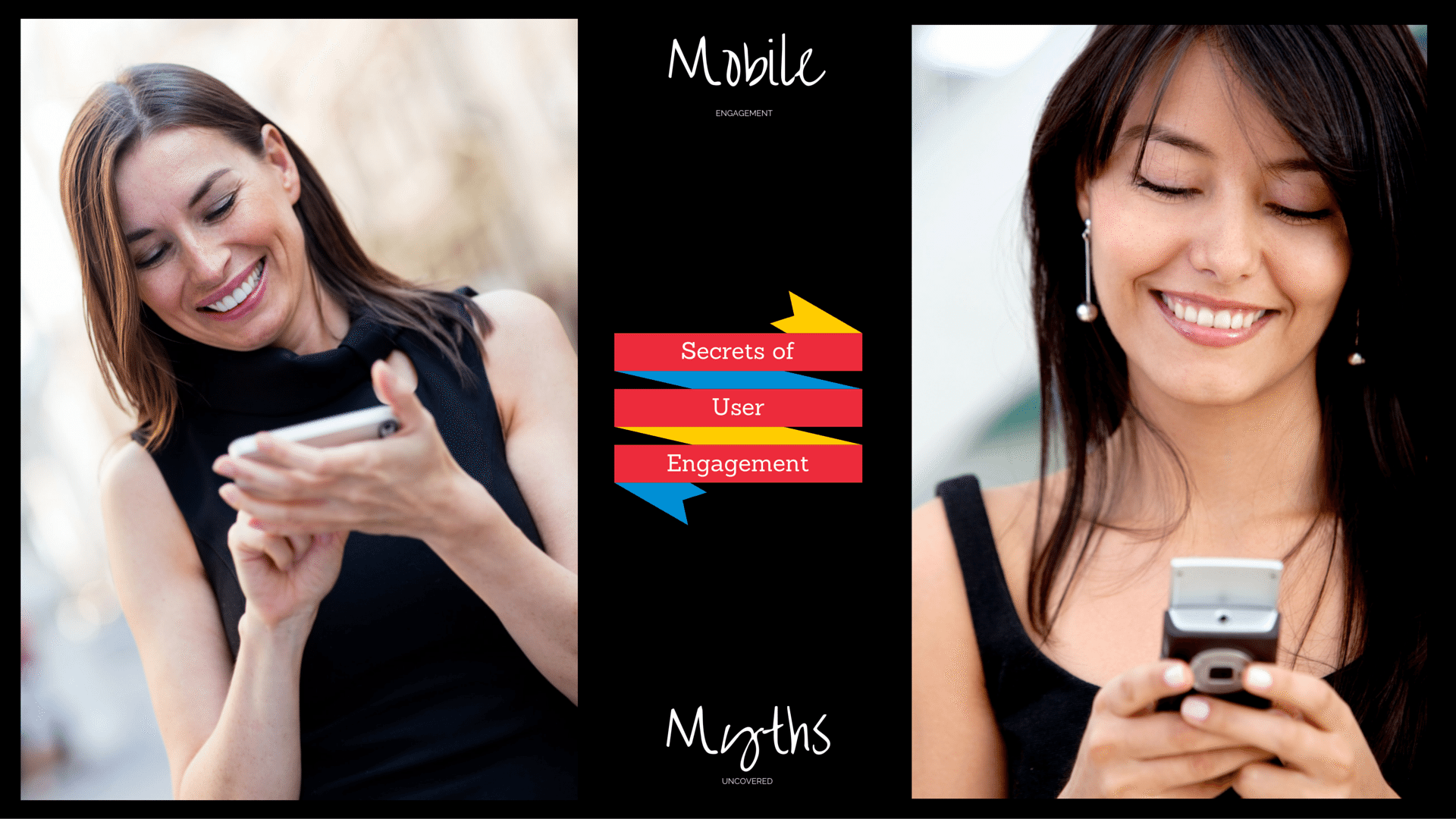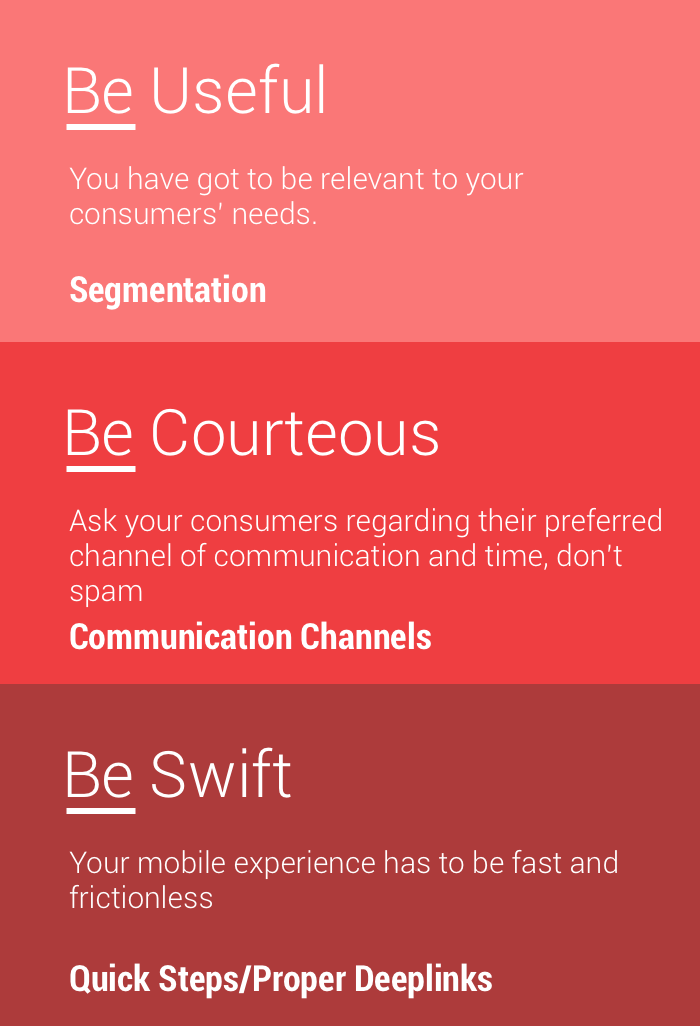Push Notifications – Easy Tips to Getting It Right

Reading Time: 4 minutes
Today, mobile apps are an essential part of any business, and push notifications have become a standard channel of communication between marketers and customers. While this thought holds true, it is one of the most widely misused marketing channels as well (even though email tops the chart).
I see a lot of apps sending notifications on a daily basis, be it E-commerce, travel, entertainment, or dating. Also, some choose to set the notifications to come up as priority notifications, while others select a notification tone that corresponds to their branding. While the goal in almost all cases is to somehow get the attention of the user, it’s not always a pleasant experience.
Bonus Content
|
In recent times, you might have noticed a lot of hype about Facebook using Chrome notifications for their mobile website; the primary reason behind it might be customer engagement even for mobile web users of Facebook, but it showcases how powerful push notifications can be and their importance.
Why use push notifications?
The idea is to communicate with your users and encourage them to use your product. It is also about maintaining a communication channel with your consumers.
While the so-called Micro-Moments are really relevant, engaging with your consumers on a regular basis helps create a brand image and also reminds them of the app’s presence on their smartphones. This makes it more crucial for marketers to do it right always and in a consistent way.
Like it said, “With great power comes great responsibility.”.
This holds true even for push notifications.
How to use it?
Let’s talk about a normal consumer. A normal consumer with a travel app on their phone might not book a flight or a hotel every day, while some other consumers might be interested only in hotel offers, whereas a frequent flyer might want to be informed about every single offer, be it a hotel or flight.
From the very look of this example, you get to understand that you need to segment your customers when you reach out to them. You can also choose to ask your consumers what they might be interested in from time to time and send relevant information.
Well, again, daily-use products might want to engage with users on a regular basis, but at the same time, your users might not be very happy about the same.
As of now, nearly 85% of the users on Android don’t know how to disable notifications for Android, while marketers are enjoying the same, I doubt how long this can be exploited.

1. Be Useful:
You have to be relevant to your consumers’ needs. Not everyone is interested in all the products and services you have to offer. All customers are not the same.
Segmentation
If you were to send the same message and content to all your users, irrespective of their app usage, the metric that you might derive at the end of the marketing campaign might leave you clueless. Whereas if you segment your users well, the insights you find will help you understand your users better.
For example, Sending a notification for Offers on iPhone accessories to a user who uses a Samsung device; will that actually derive the value to your ongoing SALE?
2. Be Courteous:
Don’t just spam your users on every possible channel; rather, take their preference as to how they want you to communicate with them. Use appropriate communication channels for each user.
Communication Channels
Not every consumer prefers push notifications. Some even get irritated with your notification tone. You still send notifications to these users, whereas they might eventually get pestered and uninstall your app. A better approach would be to prompt them for their preferences and then act accordingly.
Personalization
Another key point would be personalizing the message or the content for every individual user. By personalization, I don’t just mean using their names; even the content of the message and the coupon code can be personalized.
For example, you would want to avoid cart abandonment, but adding what is in their cart in the message itself might be the right thing to do because the user might not remember at that very moment what was the pending item in the cart.
3. Be Swift:
Your app notification redirection has to be fast and appropriate. It has to be frictionless. It should take the minimum number of steps for the user. Of online consumers, 69% agree that the quality, timing, and relevance of a company’s messages influence their perception of a brand (Source: Consumers in the Micro-Moment, March 2015).
a) Timing
You cannot just send push notifications at every hour of the day. You might also have users across time zones. You need to account for all these factors when selecting when to send the notification. Do A/B testing to find an optimal time, and then select one.
Set the expiry to your push notifications if possible so that messages that were not delivered since the user was offline are not actually delivered to the user when they come online.
b) Deeplinks
If you are a marketer or a developer, you might have heard this word a lot these days (if not, then you seriously need to read this). It’s no mumbo-jumbo. It simply means appropriate navigation or content for the relevant action.
For example, you want your users to update the app and send a notification relevant to that to only the users who are on a specific version. The intended action of this notification should be to take them to the Play Store to update the app.
Wrap Up
Using Segmentation, personalization, and deep links together in accordance with user preference creates a strong mobile marketing tool.
Successful push-based marketing will be that which meets the consumer’s needs, respects the user’s preferences, and serves relevant content.
Want to know how brands like Bigbasket, Travelz, and Oyo Rooms use MoEngage Push Amplification to improve their push notification delivery rates? Learn more about push amplification and push notifications in our in-depth guide.







